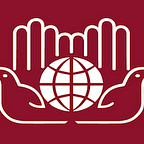TAMassociati: Creating Beauty
Pediatric center in the town of Port Sudan.
Beauty is the essence of architecture. Just consider the intricate detailing and planning of many Italian structures. The Colosseum, Pantheon, and St. Peter’s Basilica being only a few of the many. This foundational ideal — beauty — continues to live on in the works of Italian architects such as for Raul Pantaleo — one of the co-founders of TAMassociati. During this year’s Design for Humanity Summit, Pantaleo championed how necessary it is for humanitarian designers to create structures that are not so “gray,” and instead more colorful and aesthetically pleasing.
TAMassociati is an architectural research group started in the late 1980s in Venice. The group has ever-since expanded, establishing office spaces in Bologna, Trieste, and Paris. Most frequently, the architectural group is collaborating with non-profit organizations creating social and humanitarian projects (TAMassociati). One of their most highlighted collaborations being with EMERGENCY, an Italian UN NGO partner that treats victims of war-trauma in Afghanistan, Iraq, Sudan, and many other states. Since 1994, EMERGENCY has been treating a person every two minutes, with a combined total of treating ten million people up-to-date. With this medical organization, TAMassociati has created numerous health centers, including in Sudan and the Central African Republic.
As made clear by Pantaelo during the Design for Humanity Summit II, TAMassociati is “Taking care in architecture.” By this, the co-founder means that when thinking of architecture, the company services the common goods by increasing the human and environmental capital. Increasing these capitals usually means building sustainable structures that do not require extensive operational and maintenance costs. The architectural group is aware that the structures that are being built are in under-developed regions of the world, so maintaining low expenses is necessary.
One prime way in which the group takes advantage of the environment and the interests of the guests living in the structures is with their air filtration system. In some of the regions where TAMassociati builds, sandstorms become a big problem for health care facilities. Knowing this, the enterprise builds air collectors high off the ground, where the air is cleaner. In many of these regions, electricity is also an issue, so the group has created a system for air filtration that does not rely on electricity. Once the air is collected, it goes through a maze of walls. The impact of the air on the walls deposits the sand on the floor, purifying the air to its finest form — with no electricity necessary. Their method of filtering air exemplifies the company’s goal of creating sustainable structures (TAMassociati) by collaborating with nature.
For Pantaleo, “taking care,” also means care for the guest. Pantaleo and TAMassociati do not consider the individuals as patients, but rather as guests who have a right to be taken care of and feel good — physically and mentally. Welcoming individuals as guests is an important distinction because the aid work does not seem forced and mandatory but rather enjoyable and inclusive. To ensure a state of order and tranquility for individuals who have seen the worst is difficult, but Pantaleo believes creating “beautiful” edifices makes it easier. For the many who believe creating beautiful structures is expensive, TAMassociati has repeatedly shown that building appealing structures can cost the same amount used for “duller” structures (TAMassociati). How does the enterprise do it? Think eco-simple and minimalism. Admiration for beauty and the environment has allowed TAMassociati to become a successful and sustainable architectural venture.
Written By Leonit Dedushaj, Marketing and Communications Intern, Summer 2019
About the IIHA
The Institute of International Humanitarian Affairs (IIHA) prepares current and future aid workers with the knowledge and skills needed to respond effectively in times of humanitarian crisis and disaster. Our courses are borne of an interdisciplinary curriculum that combines academic theory with the practical experience of seasoned humanitarian professionals. The IIHA also publishes on a wide range of humanitarian topics and regularly hosts a number of events in the New York area, including the annual Humanitarian Blockchain Summit and Design for Humanity Summit.
For media inquiries, please contact: Camille Giacovas, Communications & Research Officer, IIHA cgiacovas@fordham.edu
